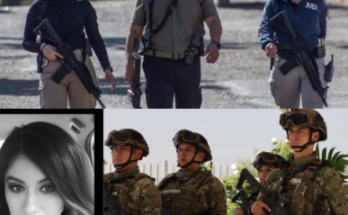
In the early hours of April 9, 2025, a dramatic and fatal encounter in the northern Mexican border city of Tijuana shook law-enforcement communities on both sides of the U.S.–Mexico boundary. At the center was Abigail Esparza Reyes—a name now etched in the annals of cross-border fugitive enforcement.
Background and role
Abigail Esparza Reyes was the head of an elite state police unit in the Mexican state of Baja California whose mission was to hunt U.S. fugitives who had fled into Mexico. Known informally as the “Gringo Hunters” (in Spanish, Cazagringos), this unit operated under dangerous, high-stakes circumstances.
She was 33 years old at the time of her death, and had led the regional team for about eight years, overseeing over 400 fugitive-apprehension operations in Mexico. Her work involved collaboration with U.S. authorities, surveillance, undercover work, and executing arrests of fugitives believed to have crossed the border.
Her personal story is notable: she began her career rising quickly through ranks in a largely male-dominated law-enforcement environment, was a mother, and committed to doing what many would consider one of the most dangerous jobs in the border region.
The operation and fatal shootout
On that day, her team had tracked down a fugitive who had escaped custody in California: César Hernández (also reported as “Cesar Hernandez” in some sources), a convicted murderer serving an 80-years-to-life sentence in California before his December 2024 escape during a court-transfer in Delano, California.
The target was located in Tijuana. During the attempted arrest, gunfire erupted. Hernández opened fire, and Abigail Esparza Reyes was fatally shot. She was transported to hospital but succumbed to her injuries.
The fugitive then engaged in a dramatic escape: local media say surveillance showed him running nearly naked through the streets, ducking under a tarp covering a vehicle, re-emerging dressed in a fluorescent green uniform similar to traffic-police garb, and then walking away.
Aftermath and significance
Her death has several layers of impact:
-
First, it underscores the hazards faced by Mexican law-enforcement officers who target fugitives, including U.S. citizens who cross the border to avoid justice. Despite cooperation between the U.S. and Mexico, operations like this remain high-risk.
-
Second, it highlights tensions and challenges in cross-border crime-fighting: the U.S. agencies like the U.S. Marshals Service had acknowledged they were in the area and rendered aid after the shooting, though they were legally barred from making arrests on Mexican soil.
-
Third, at a human level, it is a tragic loss of an experienced operative who had devoted years to this work—and left behind children and a community of colleagues who mourn her.
In the immediate response, the Governor of Baja California, Marina del Pilar Ávila Olmeda, posted condolences, stating that “Abigail’s life will be honoured, and her death will not go unpunished.” Authorities launched a manhunt for Hernández, whose capture became a high-priority for both Mexican and U.S. authorities.
Broader context
The “Gringo Hunters” unit began in the early 2000s and has captured over 1,600 U.S. fugitives by some counts—ranging from those charged with white-collar offenses to violent criminals. The border region, especially around Tijuana/San Diego, remains a focal point for fugitive flight, money laundering, cross-border criminal networks, and complex jurisdictional issues.
Esparza’s death is a stark reminder of how dangerous the pursuit of fugitives can be, especially when operations transition from planning to execution in unpredictable environments—urban areas, narrow alleyways, in daylight or darkness, any segment of which may lead to exchanges of gunfire.
Legacy and reflection
Abigail’s story prompts a reflection on several things:
-
The personal courage required: choosing to serve in this role despite risk, balancing motherhood and high-stakes duty.
-
The systemic challenges: undercover infiltration, cross-border legal constraints, resource limitations, coordination between agencies.
-
The human cost: when someone falls in the line of duty, especially one so highly skilled and committed, the ripple effects extend to families, teammates, and the broader network of law-enforcement.
-
The message it sends: for those who believe fleeing justice across borders shields them — this incident shows the risk remains very real, and the law-enforcement response is determined.
Final thoughts
In the narrative of border enforcement, Abigail Esparza Reyes stands out for her leadership, her operational history, and ultimately the sacrifice she made on what was supposed to be yet another mission for her unit. What began as a mission to apprehend a fugitive turned into a fatal confrontation. Her passing will resonate—not just in Tijuana or Baja California—but among all those who work in the shadows of international fugitive recovery. Her death may well strengthen resolve on both sides of the border to honour her legacy by improving operations, coordination, and the protections afforded to those who do this work.
If you’d like, I can pull together a timeline of her major missions, or dive deeper into the “Gringo Hunters” unit itself. Would you like me to?

